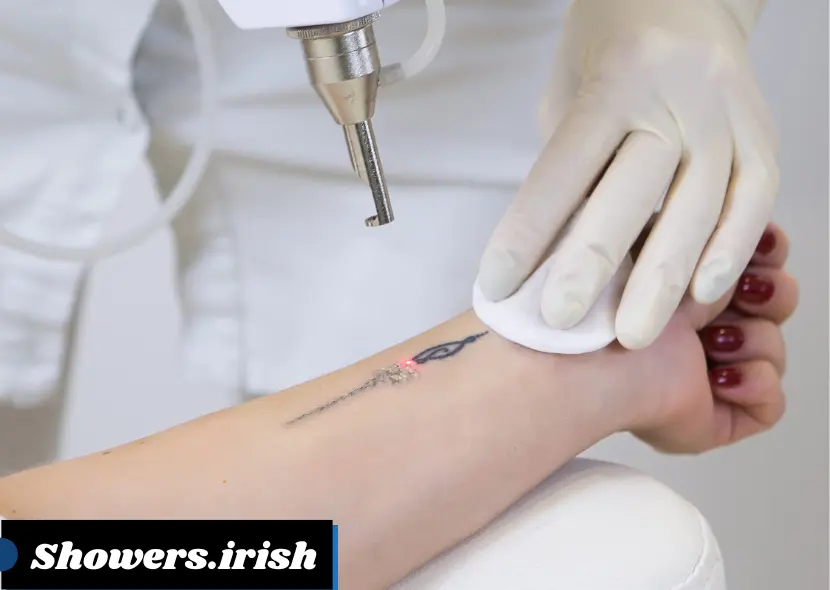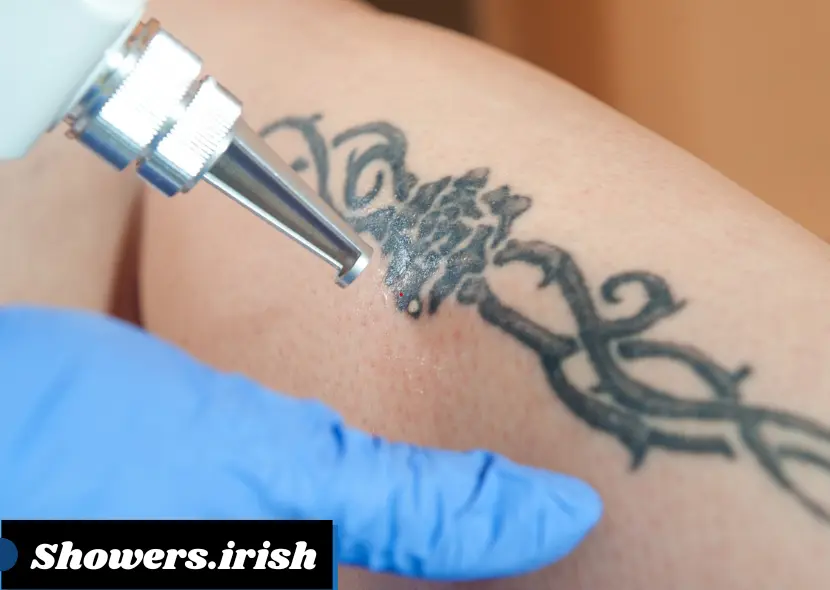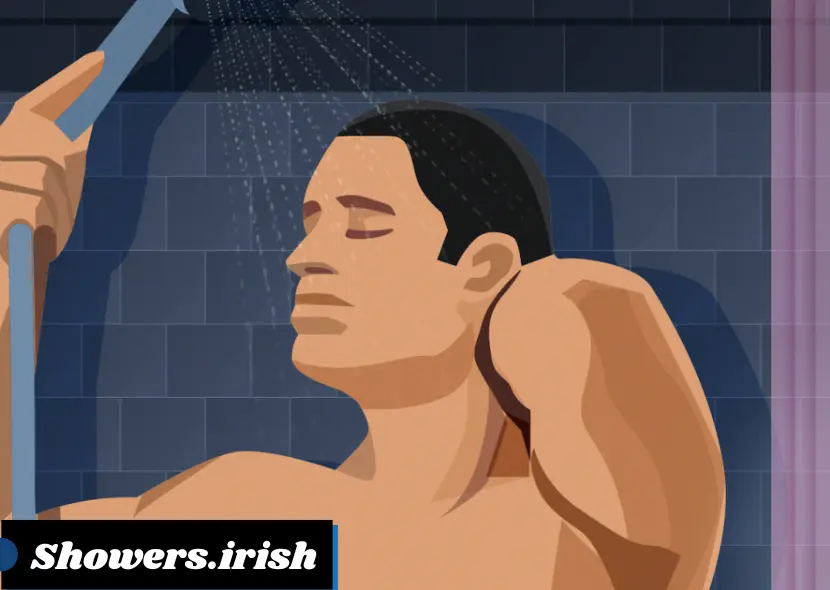Laser tattoo removal is a procedure that requires careful aftercare to ensure the best possible results. One of the key aspects of this aftercare is managing how and when you shower. This guide will explore why showering immediately after the procedure is important, how to properly care for your skin, and what to expect as you continue your recovery.
Understanding Laser Tattoo Removal
Laser tattoo removal is a highly effective method for eliminating unwanted tattoos. The procedure involves using targeted laser energy to break down tattoo ink particles, which are then absorbed and removed by your body’s immune system. Understanding the basics of this procedure can help you appreciate the importance of proper aftercare, including showering practices.

What Is Laser Tattoo Removal?
Laser tattoo removal involves the use of specific wavelengths of laser light to target and break up the ink particles in a tattoo. This technique works by delivering pulses of light that penetrate the skin and are absorbed by the ink. The process causes the ink particles to fragment into smaller pieces, which are then gradually removed by the body’s natural processes.
Why Aftercare Is Crucial
Aftercare following laser tattoo removal is crucial to ensure that your skin heals properly and to maximize the effectiveness of the treatment. The area where the laser has been applied will be sensitive and can easily become infected if not properly managed. Proper aftercare, including how you handle showering, is essential to prevent complications and support the healing process.
Common Aftercare Instructions
After laser tattoo removal, you will receive specific aftercare instructions from your dermatologist or practitioner. These instructions are designed to help your skin recover and to optimize the results of the procedure. General recommendations typically include keeping the area clean, avoiding sun exposure, and using prescribed ointments. Adhering to these guidelines will help you avoid infections and promote effective healing.
How Long After Laser Tattoo Removal Can You Shower?
Knowing when it’s safe to shower after your laser tattoo removal session is a common concern. Showering too soon or improperly can affect the healing process and increase the risk of complications. Here’s what you need to know about when and how you can safely shower after your procedure.

Immediate Post-Procedure Care
Immediately following your laser tattoo removal treatment, the treated area will be sensitive and may show signs of redness, swelling, or blistering. During this initial period, it’s crucial to avoid getting the area wet. This helps prevent infection and allows your skin to start healing without additional irritation.
Guidelines for Showering
After the first 24 hours post-procedure, you can begin to shower, but with caution. It’s important to follow specific guidelines to ensure that the treated area remains protected. Use lukewarm water and avoid direct streams of water on the treated area to minimize irritation and potential complications.
Showering Best Practices
To protect the treated skin and promote healing, follow these best practices when showering:
- Avoid Hot Water: Hot water can exacerbate irritation and increase sensitivity. Stick to lukewarm water for a more comfortable experience.
- Use Gentle Products: Opt for mild, fragrance-free soaps to reduce the risk of further irritation.
- Pat Dry: After showering, gently pat the treated area dry with a clean towel instead of rubbing it to avoid additional friction and irritation.
Potential Complications and How to Avoid Them
Complications can arise if the treated area is not properly cared for. Understanding these potential issues and how to avoid them is crucial for a successful recovery.
Risk of Infection
The risk of infection is a significant concern following laser tattoo removal. The treated area is essentially a wound, making it susceptible to bacterial infections. To reduce this risk:
- Keep the Area Clean: Follow your provider’s instructions for cleaning the area to prevent infection.
- Avoid Public Pools: Stay away from swimming pools, hot tubs, and other public water sources until the area is fully healed.
- Watch for Signs: Be alert for symptoms of infection, such as increased redness, swelling, pus, or pain, and seek medical advice if these occur.
Scarring and Pigmentation Changes
Improper care can lead to scarring or changes in skin pigmentation. To minimize these risks:
- Avoid Sun Exposure: Protect the treated area from direct sunlight and use sunscreen once the healing process is complete.
- Follow Aftercare Instructions: Adhere to all post-procedure care instructions to minimize the risk of scarring and pigment changes.
Additional Tips for Effective Aftercare
Ensuring proper care throughout the healing process will contribute to the best possible outcome. Here are some additional tips to keep in mind:

Hydration and Moisturization
Keeping your skin hydrated is essential for effective healing. Apply a recommended moisturizer to the treated area to keep it supple and promote recovery. Choose products that are free from harsh chemicals or fragrances to avoid irritation.
Avoiding Irritants
Be mindful of activities and products that could irritate the treated area. This includes:
- Heavy Exercise: Intense physical activity can increase sweat and irritation, so it’s best to avoid strenuous exercise until the area is healed.
- Chemical Exposures: Avoid using products with strong chemicals or exfoliants on the treated skin.
Long-Term Care
Even after the initial healing period, continuing to care for your skin is important. Long-term care practices, such as protecting the area from sun exposure and maintaining good skin hydration, will help ensure that the results of your tattoo removal treatment are preserved.
Conclusion
In summary, waiting at least 24 hours before showering and following proper showering practices can significantly impact the healing process after laser tattoo removal. By understanding and adhering to these guidelines, you can reduce the risk of complications and support the effective removal of your tattoo. If you have any concerns or notice any unusual symptoms during your recovery, don’t hesitate to contact your healthcare provider.
For further reading on laser tattoo removal and aftercare, consider exploring additional resources on skincare and tattoo removal procedures. Taking the time to properly care for your skin will help ensure that you achieve the best possible results from your treatment.
Frequently Asked Questions (FAQs)
1. How soon can I shower after a laser tattoo removal session?
You should avoid showering for at least 24 hours immediately following your laser tattoo removal treatment. This helps to reduce the risk of infection and allows the skin to start the initial healing process.
2. Can I use soap on the treated area after 24 hours?
Yes, you can use a mild, fragrance-free soap on the treated area after 24 hours. Make sure to use lukewarm water and avoid scrubbing the area. Gently pat the skin dry with a clean towel.
3. What should I do if the treated area gets wet before the 24-hour mark?
If the treated area gets wet before the 24-hour mark, gently pat it dry and keep an eye out for any signs of infection or irritation. Follow up with your healthcare provider if you notice any unusual symptoms.
4. Are there any specific shower products I should avoid?
Avoid using harsh, fragranced soaps or body washes on the treated area. Opt for mild, non-scented products to minimize irritation and support the healing process.
5. How can I prevent scarring after laser tattoo removal?
To prevent scarring, avoid exposing the treated area to direct sunlight, follow your dermatologist’s aftercare instructions, and keep the skin moisturized. Avoid picking at or scratching the treated area to promote proper healing.
Related Post:
If you’ve recently undergone a laser tattoo removal treatment, proper aftercare is essential for optimal healing. One common concern is how soon you can shower after the procedure. It’s crucial to wait at least 24 hours before exposing the treated area to water to minimize the risk of infection and irritation. When you do shower, use lukewarm water and a mild, non-scented soap, and avoid scrubbing the area.
For more tips on managing skin care routines involving water exposure, check out this related post on how long after using a sunbed you should wait before showering: Showers Irish. It provides useful insights that can help in understanding how various skin treatments interact with your hygiene practices.
Credit Website: www.ireland.ie/
